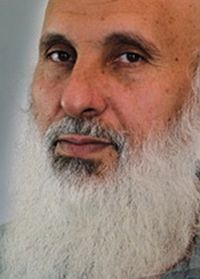Christoph Reuter reports on the documents revealing Haji Bakr’s blueprint for ISIS: What Bakr put on paper, page by page, with carefully outlined boxes for individual responsibilities, was nothing less than a blueprint for a takeover. It was not a manifesto of faith, but a technically precise plan for an “Islamic Intelligence State” — a caliphate run by an organization that resembled East Germany’s notorious Stasi domestic intelligence agency.Samir Abd Muhammad al-Khlifawi aka Haji Bakr
This blueprint was implemented with astonishing accuracy in the ensuing months. The plan would always begin with the same detail: The group recruited followers under the pretense of opening a Dawah office, an Islamic missionary center. Of those who came to listen to lectures and attend courses on Islamic life, one or two men were selected and instructed to spy on their village and obtain a wide range of information. To that end, Haji Bakr compiled lists such as the following:
- List the powerful families.
- Name the powerful individuals in these families.
- Find out their sources of income.
- Name names and the sizes of (rebel) brigades in the village.
- Find out the names of their leaders, who controls the brigades and their political orientation.
- Find out their illegal activities (according to Sharia law), which could be used to blackmail them if necessary
The spies were told to note such details as whether someone was a criminal or a homosexual, or was involved in a secret affair, so as to have ammunition for blackmailing later. “We will appoint the smartest ones as Sharia sheiks,” Bakr had noted. “We will train them for a while and then dispatch them.” As a postscript, he had added that several “brothers” would be selected in each town to marry the daughters of the most influential families, in order to “ensure penetration of these families without their knowledge.”
The spies were to find out as much as possible about the target towns: Who lived there, who was in charge, which families were religious, which Islamic school of religious jurisprudence they belonged to, how many mosques there were, who the imam was, how many wives and children he had and how old they were. Other details included what the imam’s sermons were like, whether he was more open to the Sufi, or mystical variant of Islam, whether he sided with the opposition or the regime, and what his position was on jihad. Bakr also wanted answers to questions like: Does the imam earn a salary? If so, who pays it? Who appoints him? Finally: How many people in the village are champions of democracy?
The agents were supposed to function as seismic signal waves, sent out to track down the tiniest cracks, as well as age-old faults within the deep layers of society — in short, any information that could be used to divide and subjugate the local population. The informants included former intelligence spies, but also regime opponents who had quarreled with one of the rebel groups. Some were also young men and adolescents who needed money or found the work exciting. Most of the men on Bakr’s list of informants, such as those from Tal Rifaat, were in their early twenties, but some were as young as 16 or 17.
The plans also include areas like finance, schools, daycare, the media and transportation. But there is a constantly recurring, core theme, which is meticulously addressed in organizational charts and lists of responsibilities and reporting requirements: surveillance, espionage, murder and kidnapping. [Continue reading…]
War in Context
… with attention to the unseen


